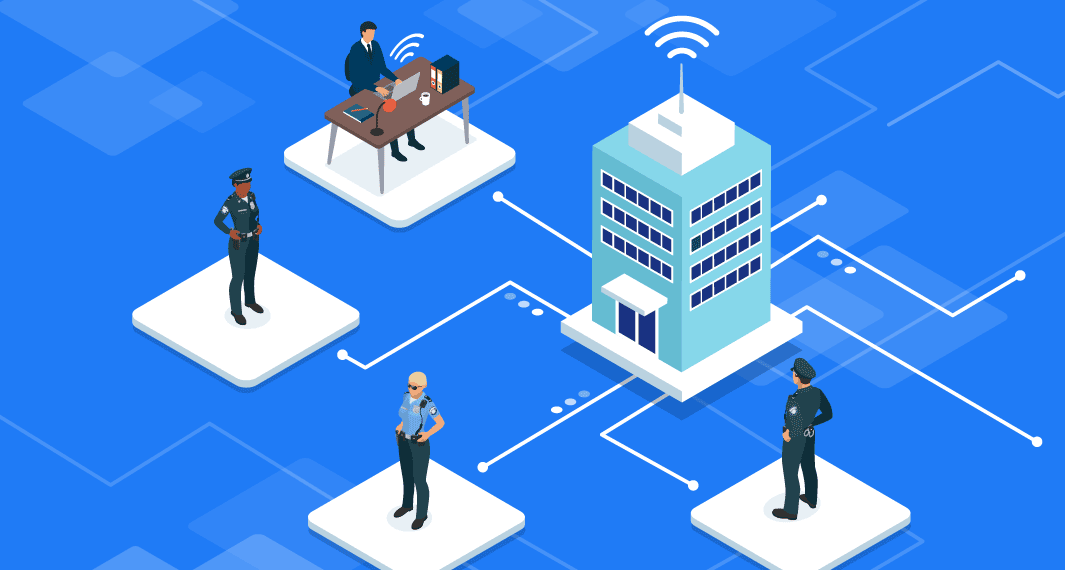How to Translate Language During Your Transition from Public to Private Security
Private or public, sector or corps, security is security, right? While hard skills might translate straightforwardly from a military career to a private security role, the soft skills needed to succeed differ significantly. This is an area that stymies many former military or law enforcement personnel who seek to transition into the private sector, and it’s an issue of balancing the head versus the heart, says Herbert Clay, CPP, director of corporate security for Sony Electronics.
Clay is a former U.S. Navy intelligence specialist who transitioned into the private sector through Lockheed Martin and then Marriott International, where he learned how to adjust security outreach, initiatives, and communication to match the necessary audience and key stakeholders.
“Marriott is where I started to understand some of the foundational principles of private sector, purely commercial corporate security in terms of company culture and company risk tolerance,” Clay says. “I think those are two of really the most difficult things to change within any organization. You have your security culture—which is how well is the security team integrated, how well they are influencing, how they are viewed as a team, how they are viewed as a resource, and how they are viewed in terms of personal security and safety. That culture is important to me and we’re all a part of that as employees and as coworkers.
“Then there’s risk tolerance, which is really completely up to your internal customers,” he continues. “A functional department informs the C-Suite of risks and then helps shape how they view those risks holistically, not just with my opinion as the lead for my business, but also with those other departments that contribute. We allow them to understand what the liabilities are, how OSHA or other regulations that other departments really value might add to the conversation, and how shapes up in terms of the organization, saying, ‘Yep, if we don’t necessarily have this measure that informs duty of care or standard of care, we're willing to take that risk, right?’
“Those weren't things that necessarily I had to deal with on the defense side, but coming into a purely commercial organization, you’re going to have those questions from key leaders who ask: ‘How are you justifying not only this expenditure but how are you framing this threat, and how are you framing this measure against our overall environment?’”
A commercial organization can reject even a reasonable security request, depending on how it fits within the brand identity, corporate leadership’s goals, or the current budget. For example, an organization’s leaders and staff might prize their open-flow corporate campus, even though it puts the company at greater risk of intrusion. So, it is the private security director’s role to leverage both core security skill sets and business acumen to tailor best practices to fit within the organization’s overall culture, Clay says.
For example, consider a company headquarters with a very open lobby area. The company values how welcoming this lobby seems to visitors and employees, and it sets a positive tone about the organization. The security leader would prefer some form of barrier to mitigate against an armed active assailant incident, but a physical barrier would be off-brand for the organization, and leaders are worried that such a measure would impact the company’s reputation with visitors or make employees anxious about safety.
Clay’s philosophy in these cases is never to remove a security measure without adding one, so the security manager and his or her team should brainstorm how to compromise without sacrificing security. The team could add automated locks on doors out of the lobby into the rest of the building to isolate the room in the event of an attack. Window glazing, elevator lockdowns, and accessible saferooms could also be leveraged to make the building safer from any threat originating in the lobby.
This creative and proactive problem-solving is a skill that Clay learned in his nine years of military service, he says, and it aligns closely with a strong work ethic and focus on the mission during a challenge. In both public and private security, adaptability and flexibility are key, but the main disconnect between the two sectors is around language.
You have to find that language that connects with that customer who has really very little knowledge of safety and security.
“We see it quite often in the security community where we are thinking of the same processes—the same risk mitigation measures—but we’re not necessarily speaking the same language,” Clay says. “We’re not using the same terminology.”
This terminology can vary by geography or jurisdiction (standardized risk assessments in the United Kingdom versus nuanced assessments in the Middle East or United States, for instance), and it can also vary dramatically across individual organizations that have different values and priorities.
“The other thing is then how your work gets translated—quite literally—to your C-suite and to your key stakeholders,” Clay says. “You have to find that language that connects with that customer who has really very little knowledge of safety and security, and being able to have those analogies and metaphors that really help them understand what you’re trying to do without scaring half your employee population. You really have to learn to understand and utilize language that is culturally fitting for your organization and adapt your security and communication, especially when presenting or trying to obtain buy-in or trying to connect with employees in a way that feels very organic for them.”
Within the U.S. Department of Defense, Clay says, security is very metrics-driven, and supported by mandates and policies. The language was standardized, terminology had clear definitions across branches, and security was an understood and logical priority. But on the commercial side, it’s more about the heart—passion about the mission you’re supporting, connecting with stakeholders about how security can enable them to achieve their goals, and demonstrating how you care for the organization and its employees.
“There has to be that language—not about driving fear or solely driving from a point of risk—but emphasizing that we care about our employees, and this is why we’re doing this. This is why we believe this is the right thing to do,” he says. “That type of language when you need it becomes a catalyst for driving a lot of support.”
Many organizations are emphasizing corporate values today, including with environmental, social, and governance (ESG) initiatives, and there’s an expectation in the commercial sector that you work there because its values align with your own and you personally believe in the mission, Clay says.
“If you apply some of that same sort of language—togetherness and us doing something for the benefit of our group or the benefit of our company—that usually goes a lot further than if you were to try that in the defense sector or in the military where everybody’s operating off a different set of norms,” Clay says.
This can be challenging for many incoming private security professionals, who may be used to people accepting security as an end goal, not a line item. This might feel like playing politics for a while, Clay says, but it’s a learning curve to come to grips with the fact that there are other core functional areas of the organization that are as important as safety and security, such as human resources, communications, research and development, or sales.
“Security in the commercial sector is a line item,” he adds. “So, we’re going to be asked often about why we’re doing a thing, why we’re spending money, how does this really help us, how do we prove value, and that’s challenging, right? Because in security, we’re trying to prove a negative… It can seem like it’s all just politics, but it’s actually a lot bigger than that.”
Especially for people stepping into new security roles or transitioning into an organization, it can be frustrating to get so much pushback or so many questions in response to a security proposal. But it’s a matter of trust, and trust takes time, Clay says.
“It takes almost a cultural shift at times for people to really understand what you’re trying to say and understand that there should be some embedded trust there. But it takes a lot of time, and it takes a lot of different ways in which you need to approach your employees, your leaders, and your stakeholders to develop that level of trust.”
Looking for more resources on public-to-private career transitions or professional development? Check out this roundup of ASIS resources as well as the new Military to Civilian Career Mapping tool here.
Claire Meyer is managing editor for Security Management. Connect with her on LinkedIn or email her directly at [email protected].














